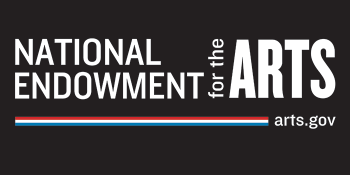For every person shot by a gun in this city, there are hundreds who challenge their own belief system, learn something about themselves and reach a new level of awareness.
For every person involved in a car accident, there are hundreds of parents, mentors, teachers and friends who spend their time providing the tools necessary to bring others to these new heights.
For the two weeks after our launch on September 15, a poll on The Rapidian website asked users what the most under-reported type of news is from your neighborhood. Of total of 298 users polled, 41 percent said they’d like to see more local success stories.
As the newly hired content facilitator for The Rapidian, this is reassuring for several reasons. On a personal level, writing feature stories that celebrate an individual or communal achievement are the most interesting to me and most fun to write. From a professional standpoint, the results of this poll appear to indicate dissatisfaction with the traditional news credo of "if it bleeds, it leads." I'm comfortable with going a step further to interpret the results of the poll as voters saying positive, human interest stories should be given priority over reports of accidents, violence and death. Yes, humans are naturally drawn to tragedy, and it would be irresponsible to ignore these events. At the same time, being inundated with this kind of material on a continuous basis promotes a sense of fear, hopelessness and anxiety.
Local success stories promote familiarity and community building. It is proactive and constructive. Tragedy as a lead story is a traditional news technique used to draw and captivate an audience. And it works (the second most under-reported type of news on TheRapidian.org, according to the 15 percent of voters in the same poll, was crime). At The Rapidian, we have no advertisers. We have no agenda and we have no heavy-handed managerial team. Our job is to educate people about The Rapidian, teach them how to use it and make sure the end product is intelligible; all with a larger goal of giving individuals the means to tell a story and amplify their voice.
By no means has The Rapidian reinvented the news. Instead, we’ve been given the opportunity to explore what mass communication looks like when it’s not influenced by outside motives, regardless if they are real or merely perceived. We’ve had a great first two weeks. Content has been delivered using Twitter, picture slide shows, text, video and audio. A very deliberate effort was made to encourage new reporters to cover ArtPrize contestants and their work. Because of the popularity, accessibility and carefree atmosphere of the event, using it to encourage the practice of citizen journalism and initiate an interaction with Rapidian.org has produced results even better than we anticipated.
I see ArtPrize coverage as the first and only assignment given in a fictional Rapidian classroom. The instructor is now on permanent vacation. Ideally, contributors will migrate from this first assignment in the direction of their choosing. Some will continue to produce content in their preferred medium. Some will choose a medium and explore it for the very first time. Still others, quite naturally, will test the boundaries of a forum that boasts free speech and create content that might otherwise have trouble finding a home.
Two weeks ago I asked the Grand Rapids Community Foundation (GRCF) to make the effort to contact the hundreds of non-profit organizations and foundations who are members of GRCF. My request was to let these organizations know if they have a unique success story rise out of their organization, to add it to the story suggestion pool on our Facebook Group Page.
Days later, I attended an open house for the Grand Rapids Institute for Information Democracy (GRIID), where they announced their next efforts will include taking a critical look at the different foundations in town; who sits on the boards, where the money comes from and to whom funds are distributed.
This kind of multi-directional approach to subject matter results in hearing from all those who feel compelled to be heard. News is no longer dictation, it has become a conversation. It is The Rapidian.
The Rapidian, a program of the 501(c)3 nonprofit Community Media Center, relies on the community’s support to help cover the cost of training reporters and publishing content.
We need your help.
If each of our readers and content creators who values this community platform help support its creation and maintenance, The Rapidian can continue to educate and facilitate a conversation around issues for years to come.
Please support The Rapidian and make a contribution today.

